LEG 5 – SATURDAY 17 JUNE
Treviglio, Stezzano, Bergamo, Provaglio d’Iseo, Ospitaletto, Gussago
On the fifth day, before greeting Bergamo, that together with Brescia, are the Italian Capital of Culture 2023, the competing cars crossed the Bergamo territory passing through Treviglio, Stezzano, the Kilometro Rosso and then headed to the finish line in Brescia through Provaglio D’Iseo, Ospitaletto and Gussago.
Treviglio
Treviglio welcomed the Red Arrow for the second time
Probably founded between the 5th and 6th centuries from the union of three Roman villas, hence the name Tre villae and therefore Treviglio, the town’s wealth and autonomy grew in the Middle Ages.
Surrounded at the time by a triple defensive moat, its purpose was purely agricultural and it developed greatly from the 14th century onwards.
The 16th and 17th centuries, on the other hand, represented the most difficult period for the town: initially a land disputed between France and the Republic of Venice, then between France and Spain, it was raided in 1509 by the Venetians and risked a second and terrible raid by the French army commanded by General Lautrec in 1522, which was only avoided thanks to a miraculous intervention: the fresco of the Madonna and Child preserved in the Augustinian Monastery began to cry and convinced the general to lay down his arms. A great development occurred in the 19th century due to the arrival of the railway. The excellent connections, which still today make Treviglio easily reachable from Milan, Cremona, Bergamo, Verona and Venice, gave a boost to the industrial development of the town, as well as to social development: public schools were founded, which still today attract many students from all over the Lombardy region, as well as philanthropic associations, excellent services and, between the 19th and 20th centuries, the Public Library and the Civic Museums.
Stezzano
The 1000 Miglia in Stezzano, cradle of technological innovation and Bergamo’s green lung
Stezzano is located in the southern plains of Bergamo, the city it borders on, and its roots date back to Roman times: in fact, it has always played an important role thanks to its position along the military road that connected Milan to Bergamo. The historical centre is an interesting example of a fortified agricultural village of medieval origin, still intact in its structure. It is mainly characterized by historic period buildings, agricultural courtyards and many large noble villas: Villa Moroni, Villa Moscheni, Villa Maffeis/Grumelli-Pedrocca (currently the town hall), Villa Morlani and Villa Caroli-Zanchi. Also worth mentioning in the Stezzano area are the parish church dedicated to St John the Baptist, the Shrine dedicated to the Madonna dei Campi, the small 16th century church on the border with Bergamo and the characteristic fountain, known as ol Surbù, built on the occasion of the passage of Emperor Ferdinand I of Austria in 1838. Considering the ratio between the surface area of the municipality and the number of parks, currently 13, Stezzano constitutes one of the largest green lungs in the Bergamo hinterland and is also home to numerous national and international companies in the fields of logistics, technological innovation, braking systems production, energy and automation.
Bergamo
Second consecutive passage of the 1000 Miglia through Bergamo in the year of the Capital of Culture
Bergamo is one of the richest and most characteristic capital cities of northern Italy: set in a system of hills that has been a Regional Park since the 1970s, the city is characterised by its different souls (linked by historical villages of considerable interest): the historical centre of Città Alta, surrounded by the mighty Venetian Walls built at the end of the 17th century and a UNESCO Heritage Site, and Città Bassa, the modern part of the city. A city of art and culture (this year’s Italian Capital of Culture with Brescia), Bergamo is at the centre of one of the most innovative and productive areas on the European continent, and is the second largest manufacturing district by added value in the old continent.
Provaglio D’Iseo
The 1000 Miglia among the treasures of Lake Iseo
A link between the lake and the hills, Provaglio d’Iseo encompasses precious art and natural treasures such as the Torbiere del Sebino and the Cluniac Monastery of San Pietro in Lamosa, making it a truly unique place. The Monastery, founded in the 11th century and still one of the most interesting Romanesque complexes in the province of Brescia, dominates the Torbiere del Sebino, a Nature Reserve of international importance. The area is also rich in interesting historical buildings: Palazzo Francesconi, once a noble residence and today the prestigious seat of the Town Hall; the 16th-century Sanctuary of the Madonna del Corno, externally decorated with frescoes of which some parts still remain, built around the beginning of the 16th century and dedicated to the Annunciation of the Madonna. The Castle, an ancient building complex, bears witness to the importance this place has had since the Middle Ages: the ancient medieval fortress, which archaeological excavations and restoration work are bringing to light and enhancing. Worthy of note is also the small Church of San Bernardo, dating back to the second half of the 15th century.
Rodengo Saiano
Grace and simplicity among the hills and the plains in Brescia
Halfway between Brescia and Lake Iseo, Rodengo Saiano overlooks the plains, nestling on the hills (Monte Pianello, Monte Delma, Colle della Rocca) where the Torrente Gandovere and the Seriola Molinaria flow.
Its rural origin has been somewhat altered in recent decades by demographic pressure from the city. Nevertheless, the testimony of the settlements that gave rise to the town remains alive, noticeable in the ancient walls and manor houses that characterise each district.
The historical and architectural elements that most characterise the area are the Franciscan Calvary on Mount Delma, today the seat of the Symposium Academy, the deconsecrated church of San Salvatore, which today hosts cultural events of all kinds, and above all the Olivetana Abbey, a religious complex founded in 1090 inside which it is possible to admire Romanino’s frescoes. The many centuries of the Abbey’s history have given us a building whose richness contributes to an ensemble that as a whole expresses grace and simplicity.
To compensate for the cumbersome presence of the arterial roads and productive and commercial activities, in addition to the paths that cross the woods of the hills, a number of urban oases (the Frantoio park, the Ciclodromo, the Ortoparco, the Ortobosco) allow you to enjoy the greenery and quietness on your doorstep.




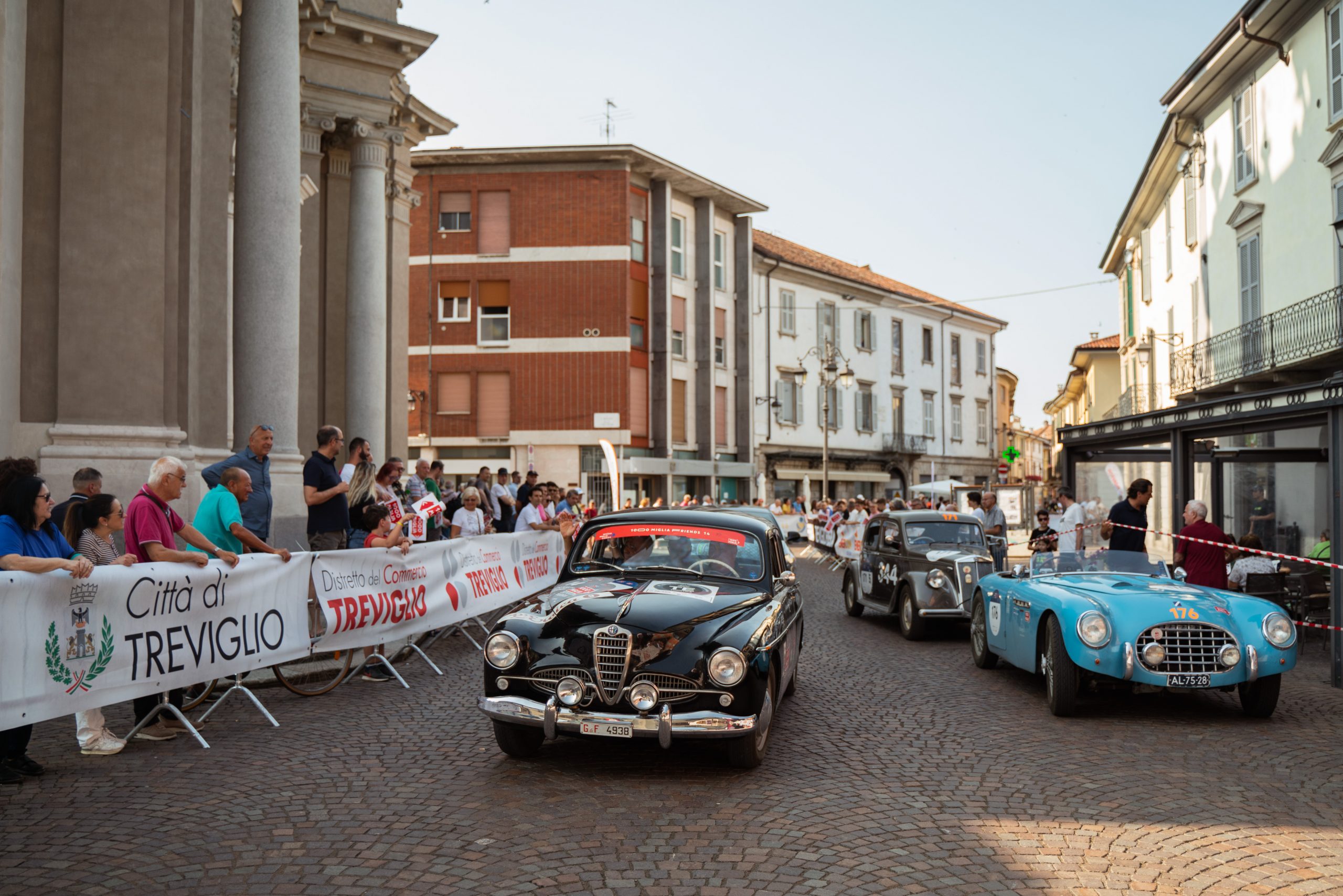
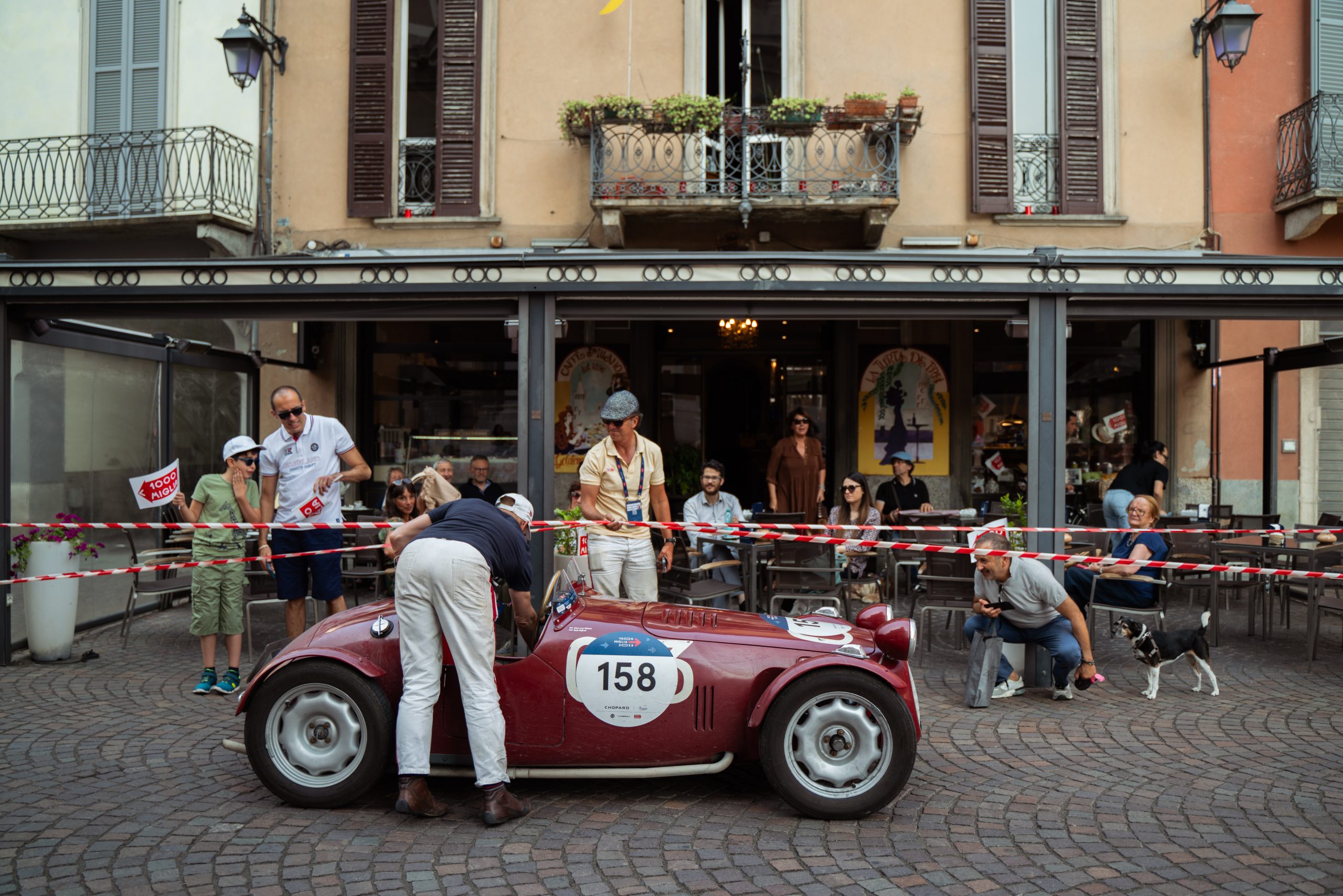
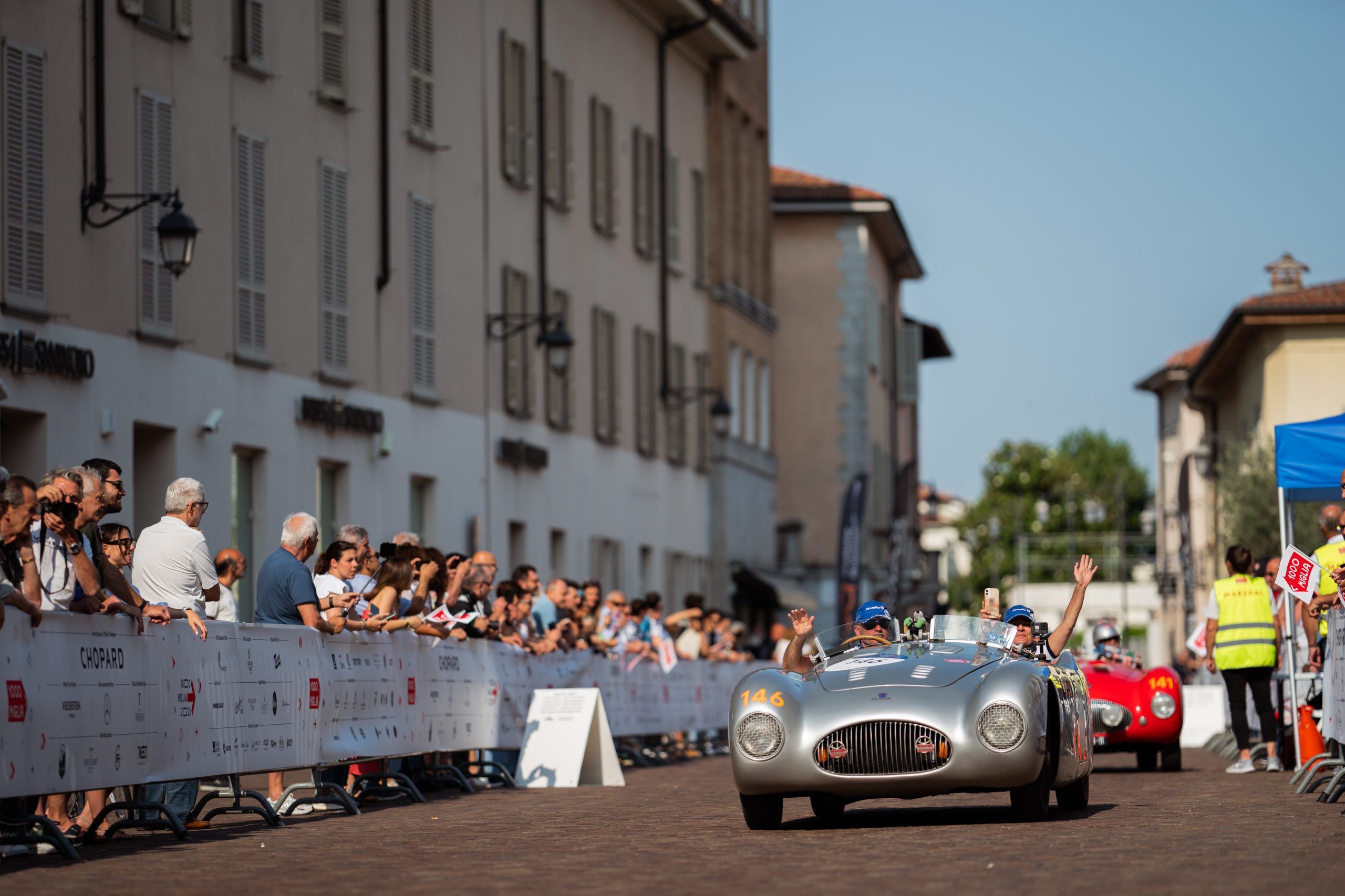
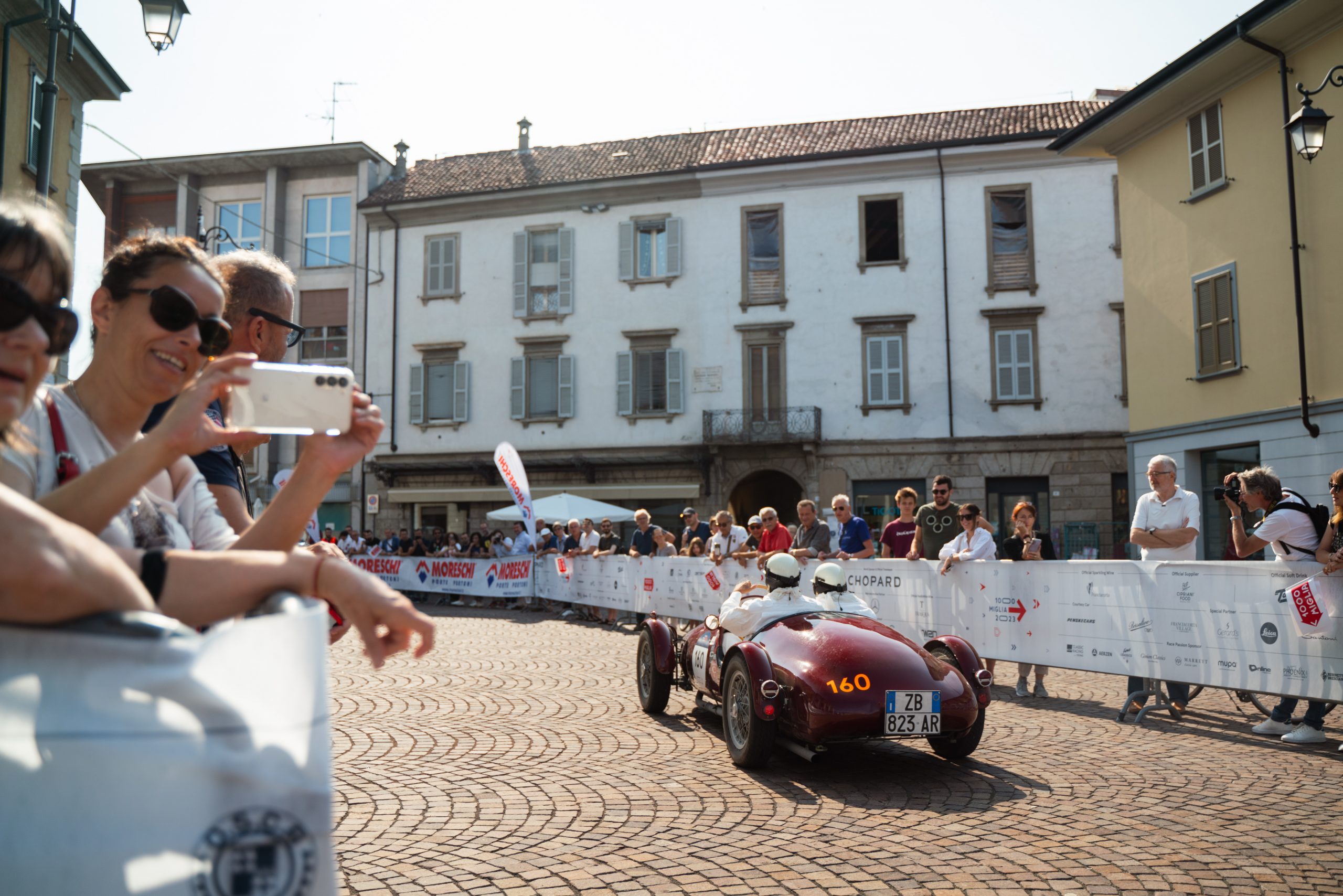
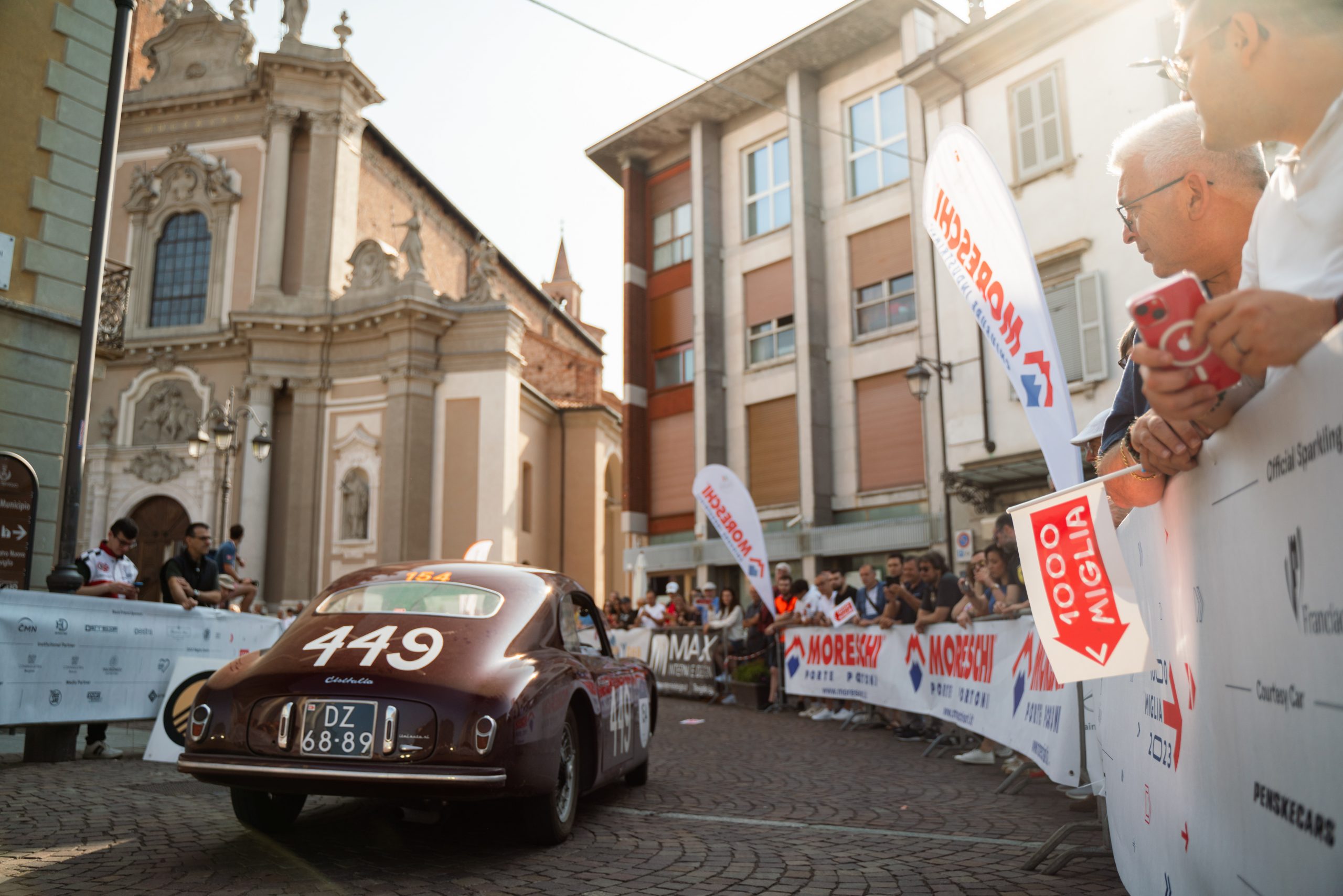
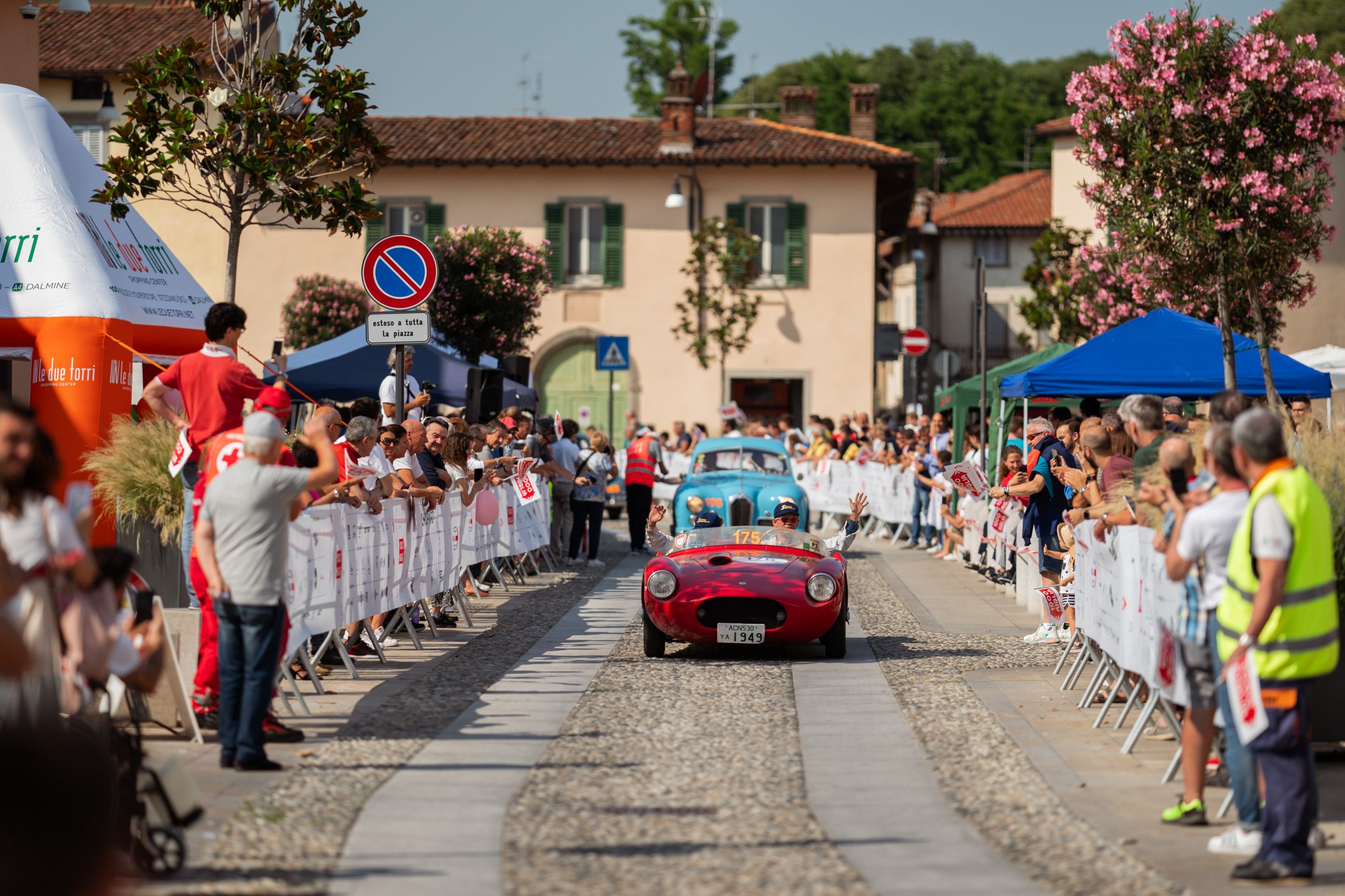
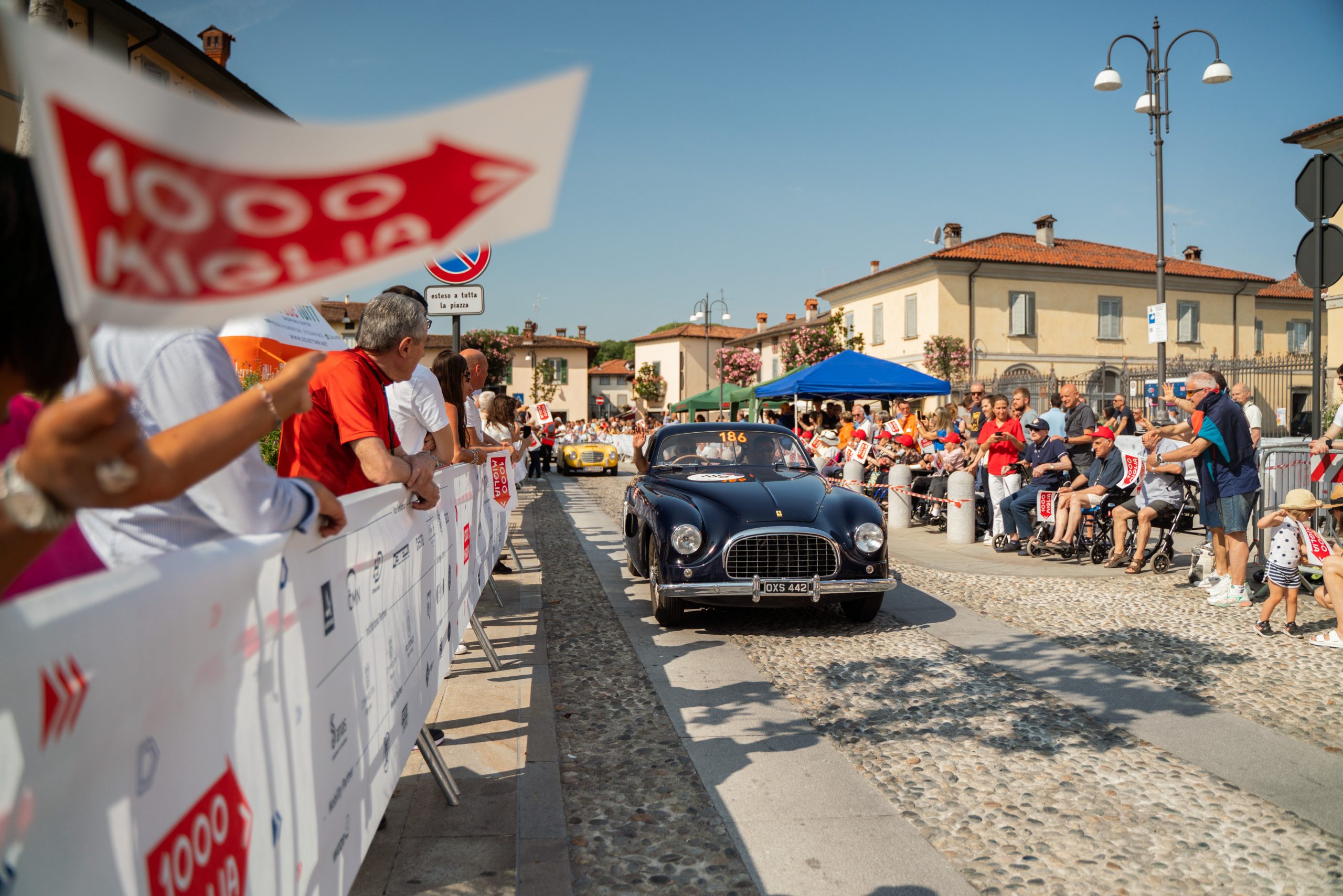
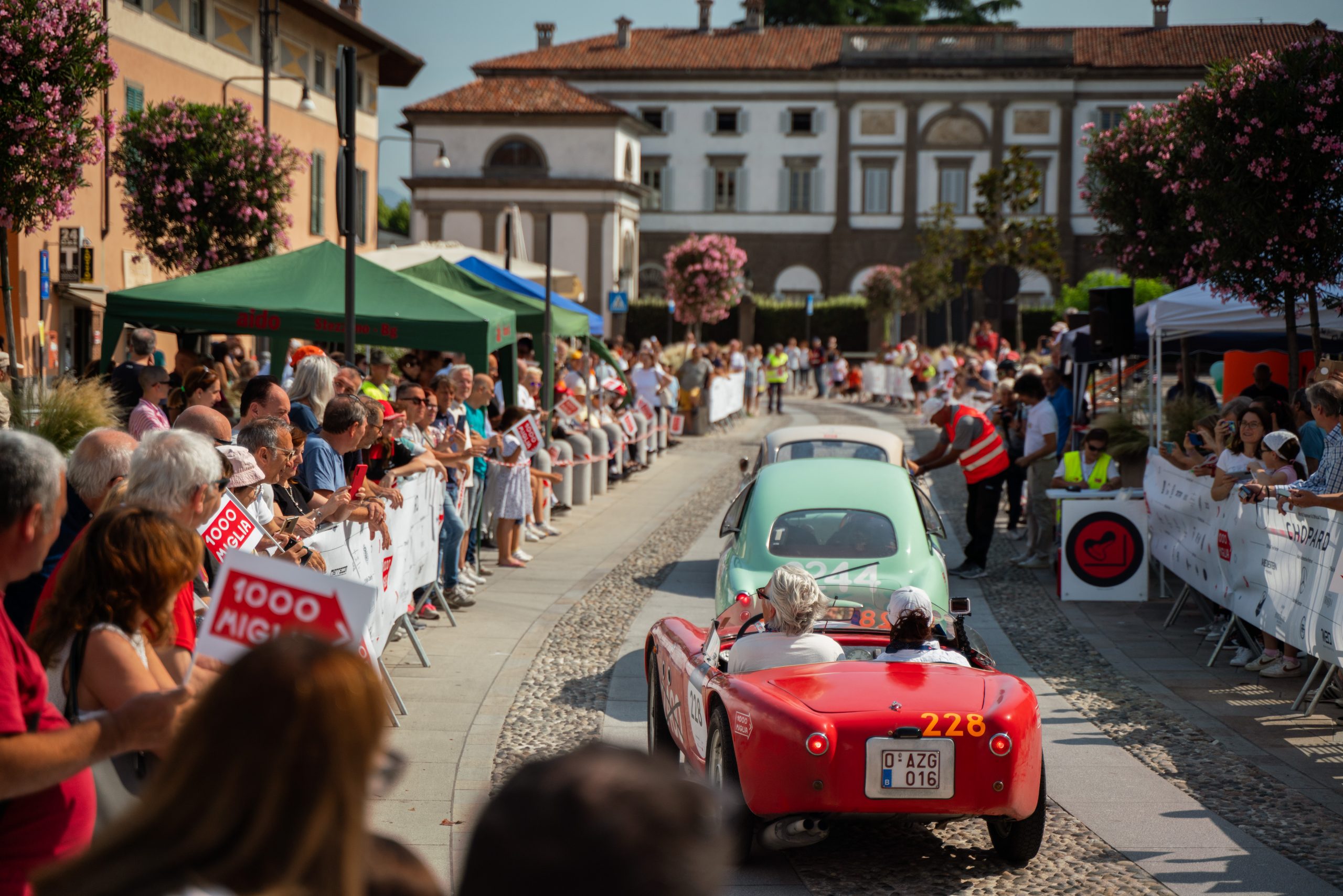
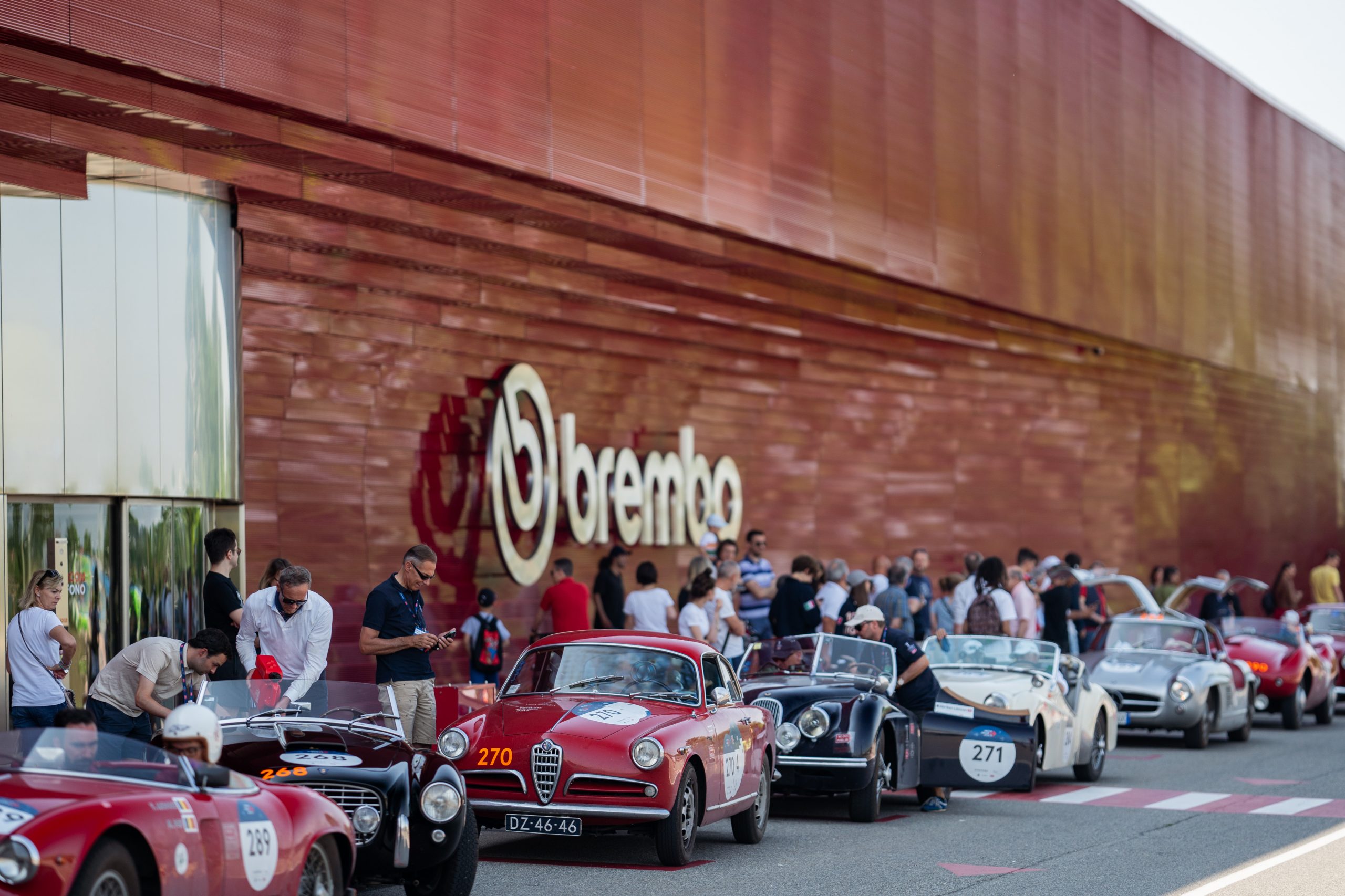
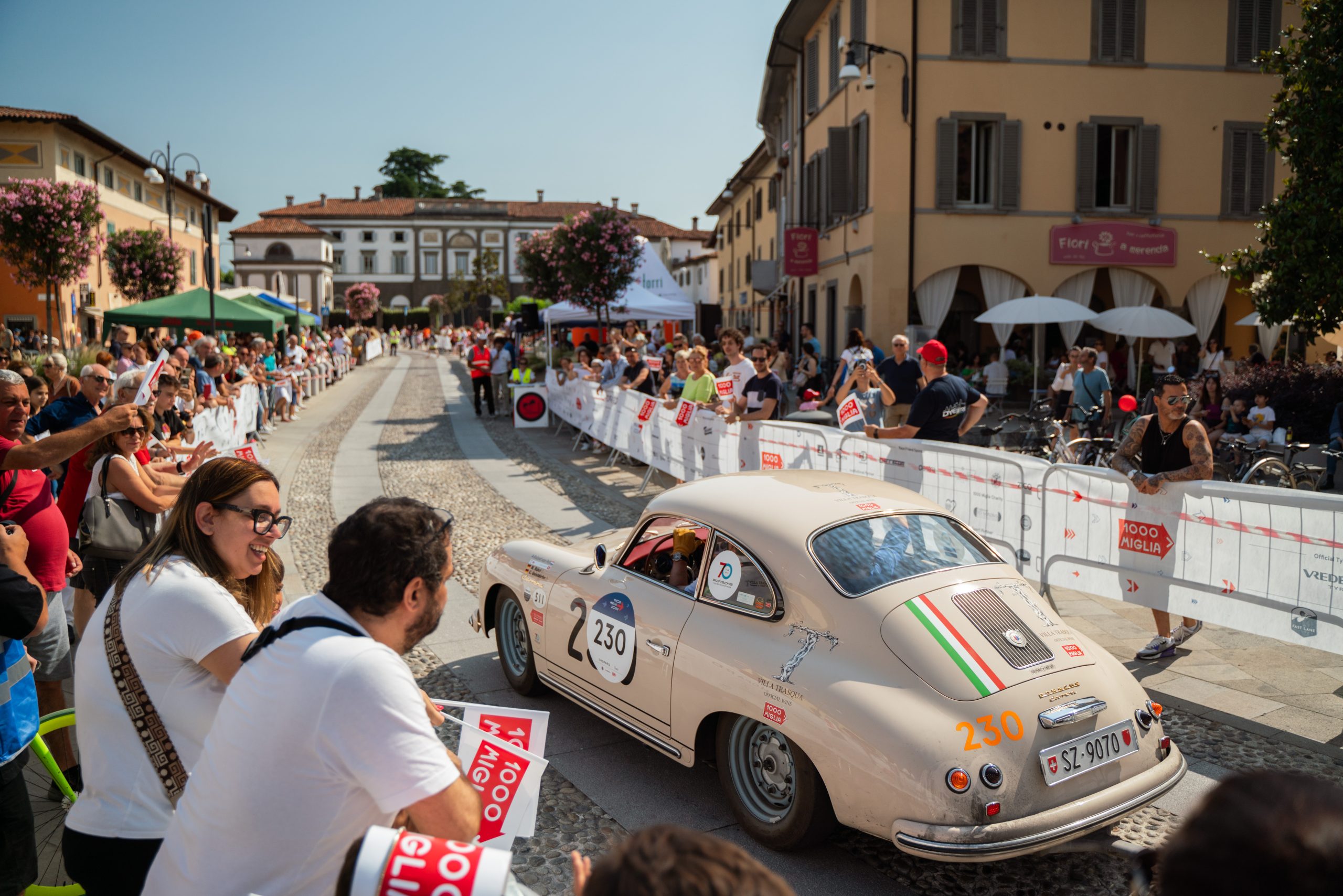
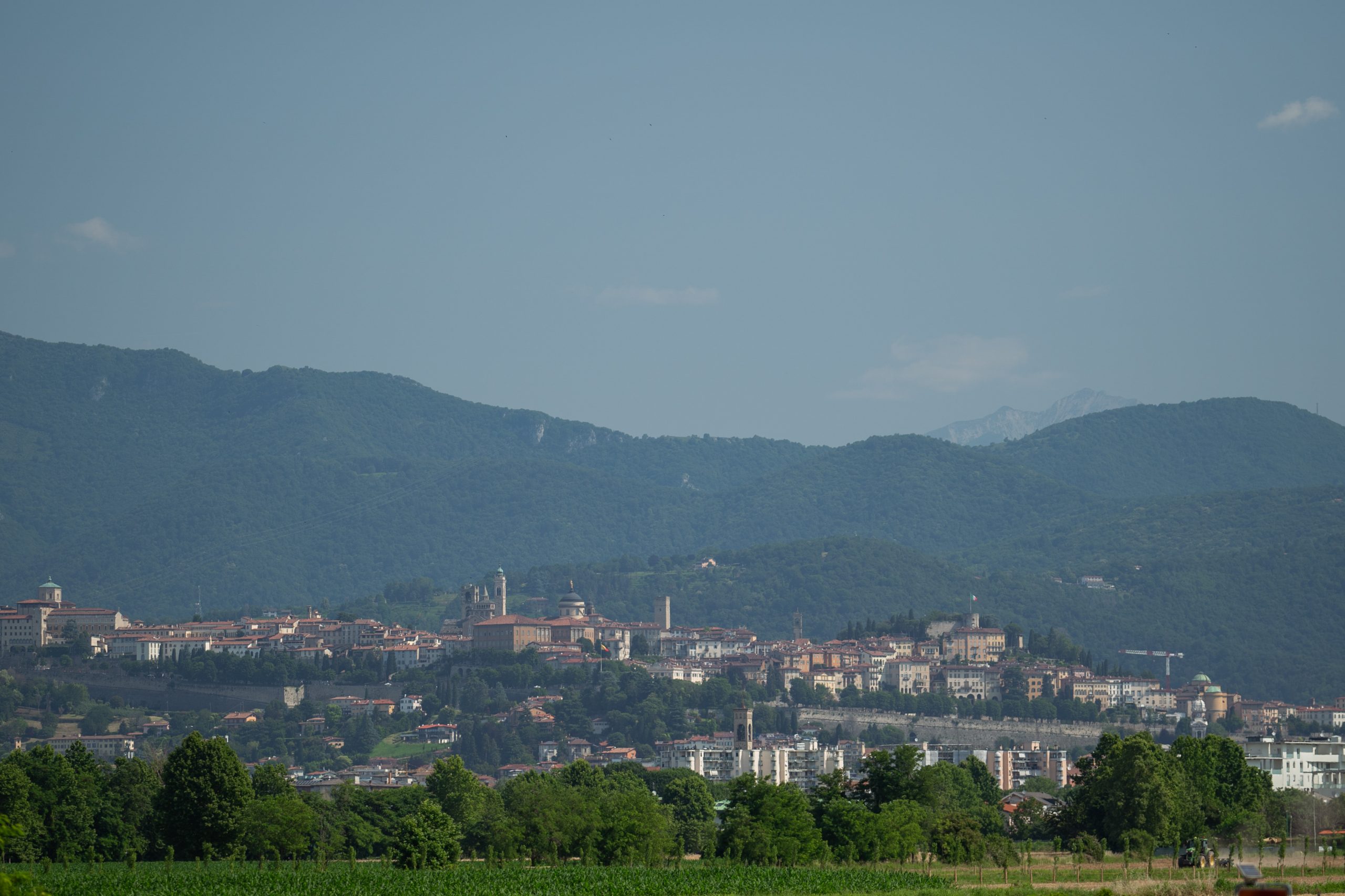
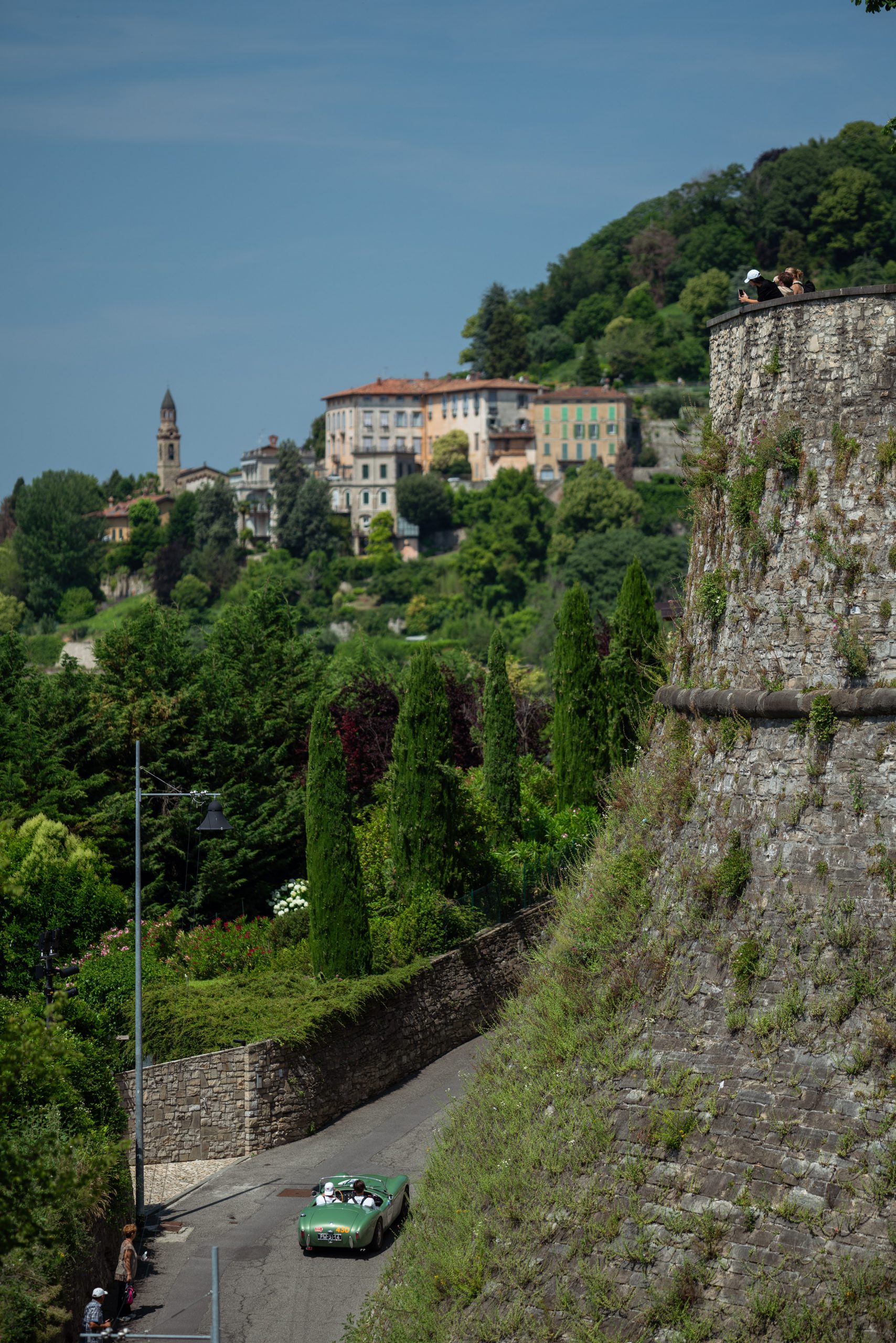
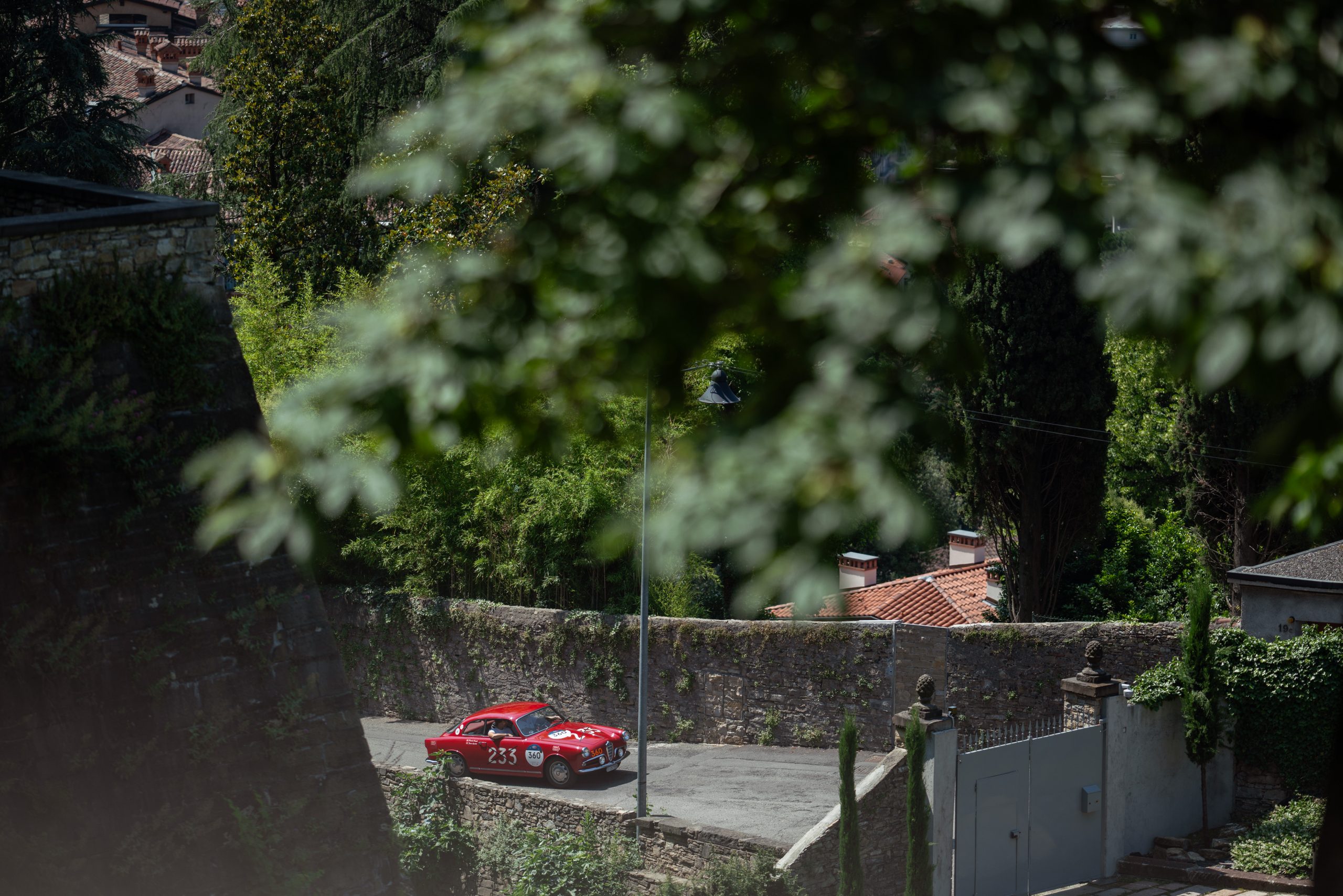
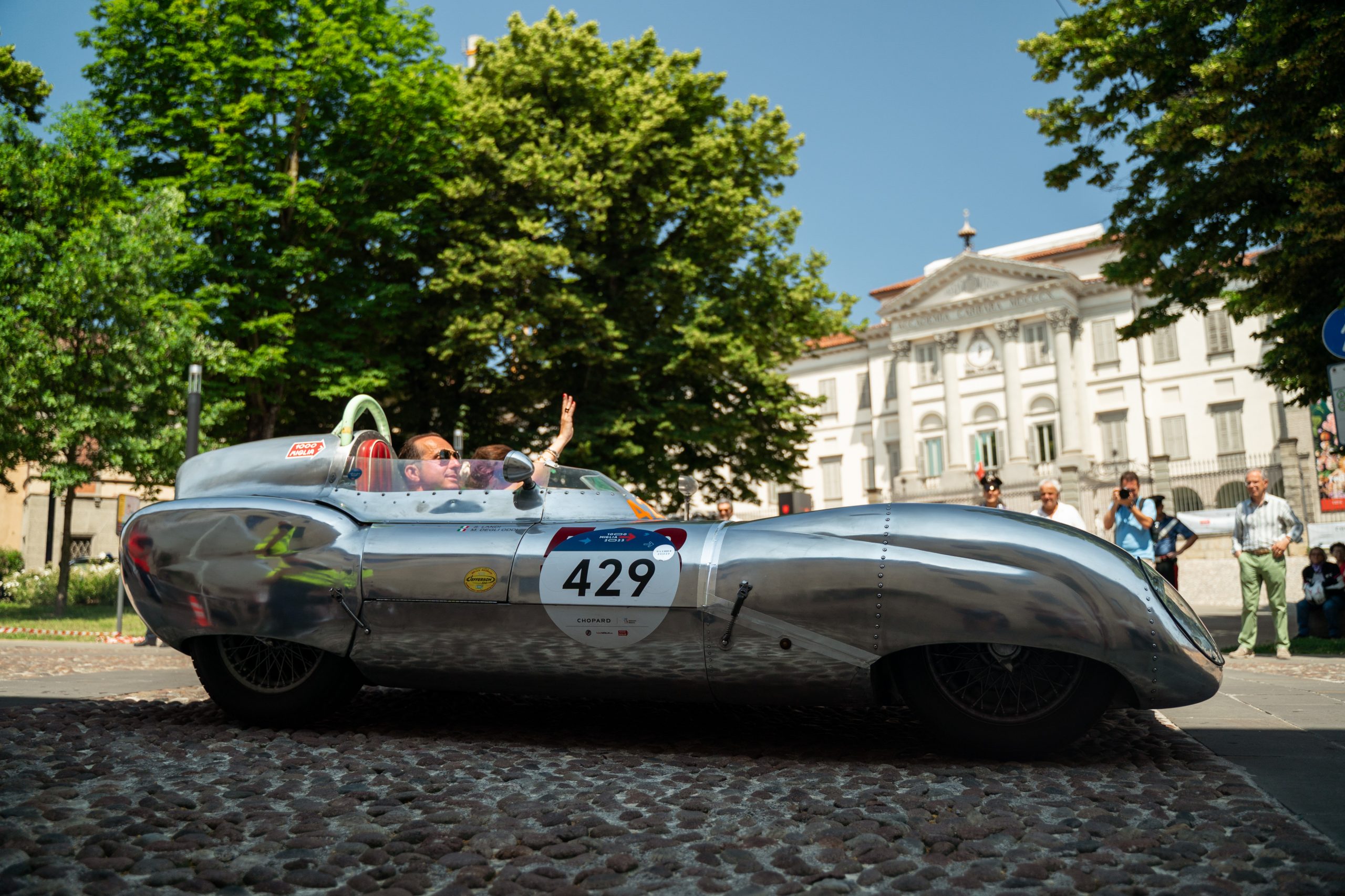
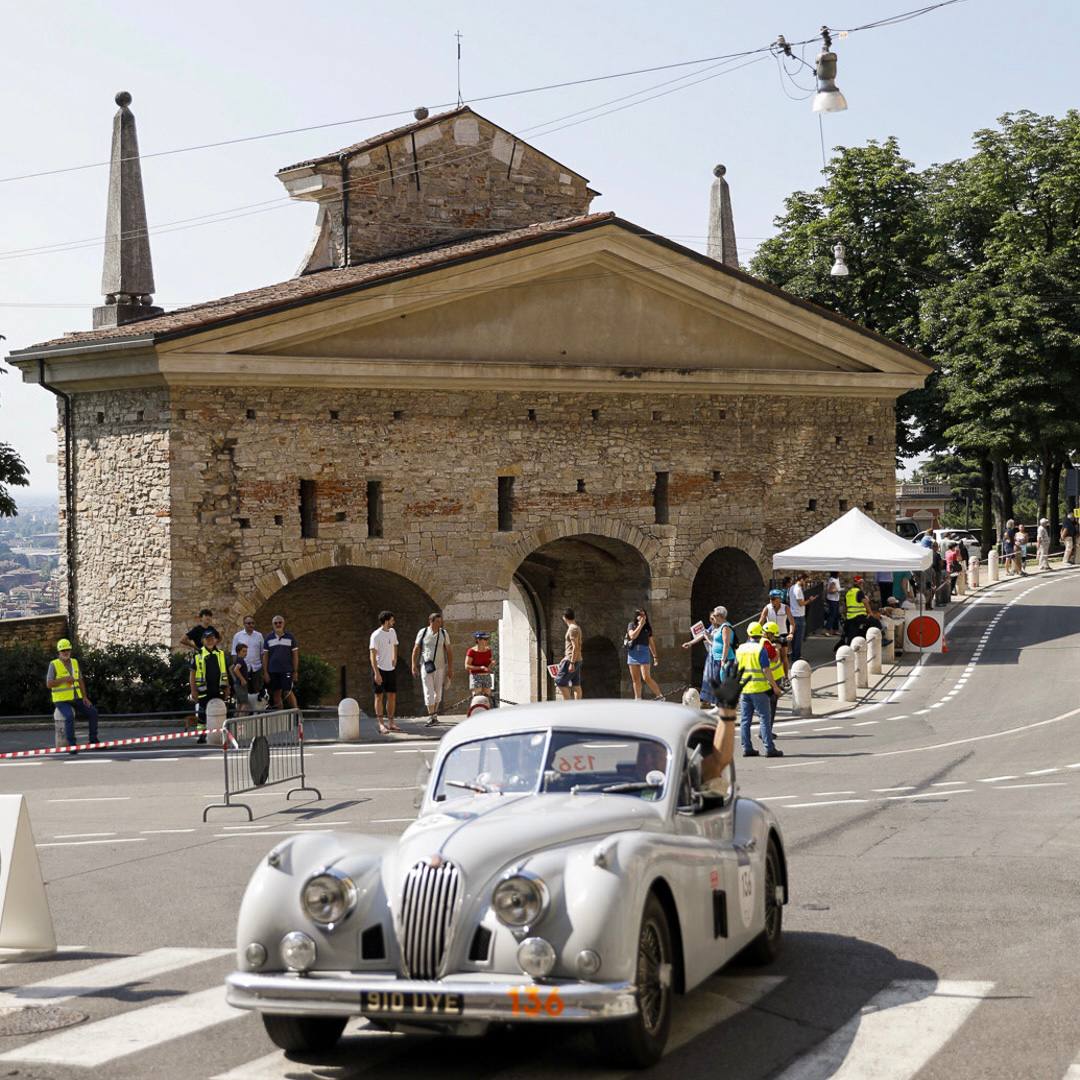
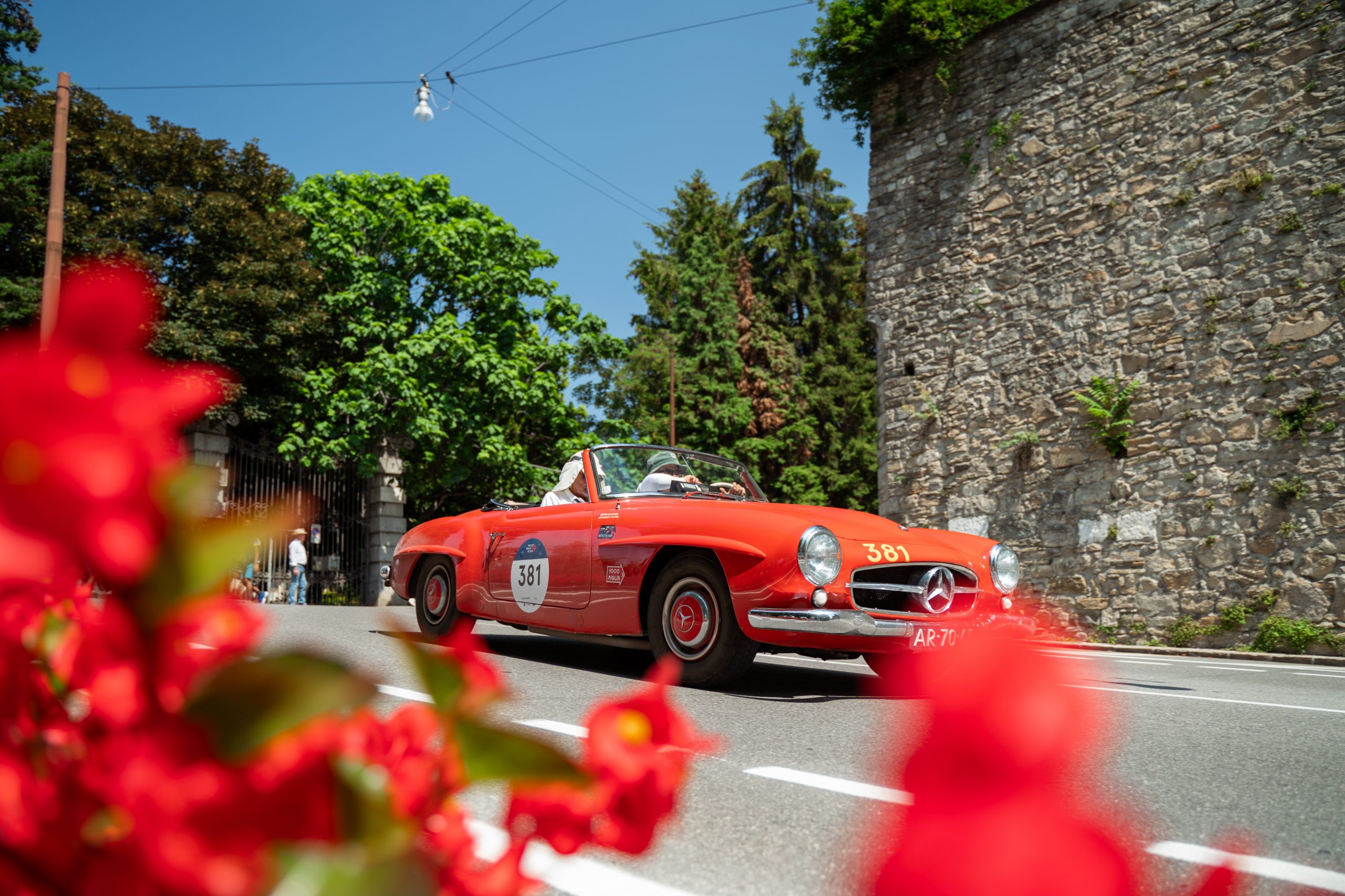
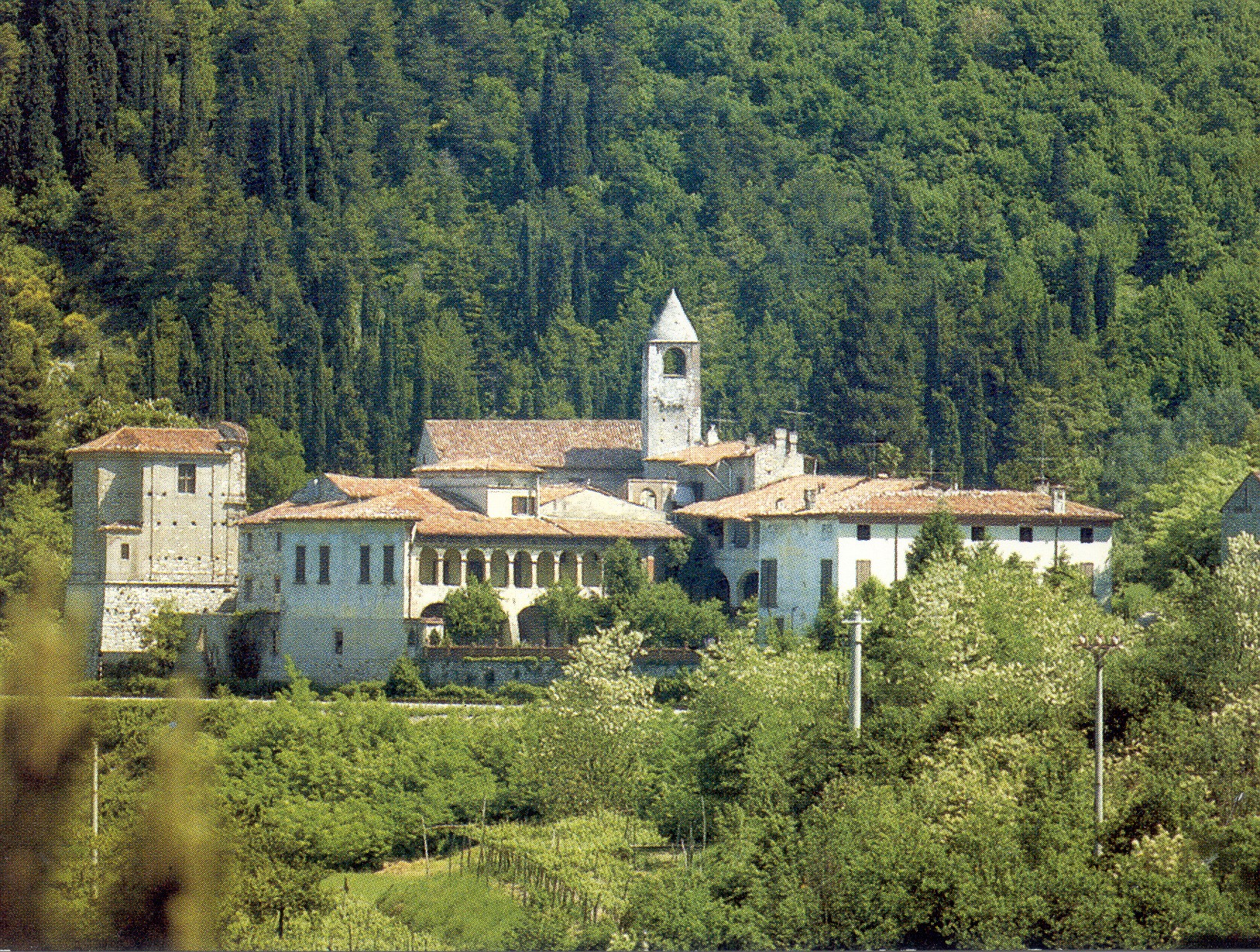
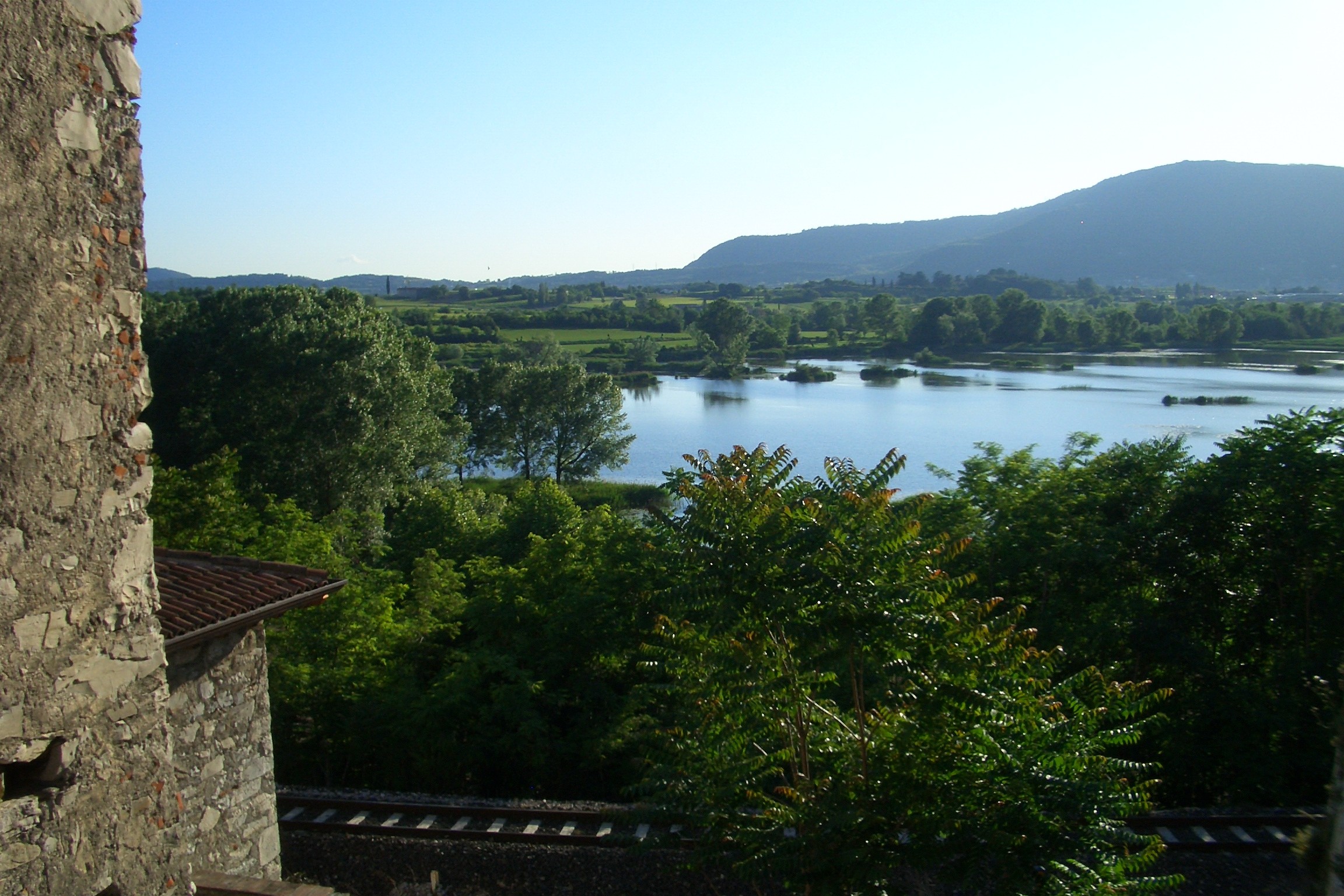
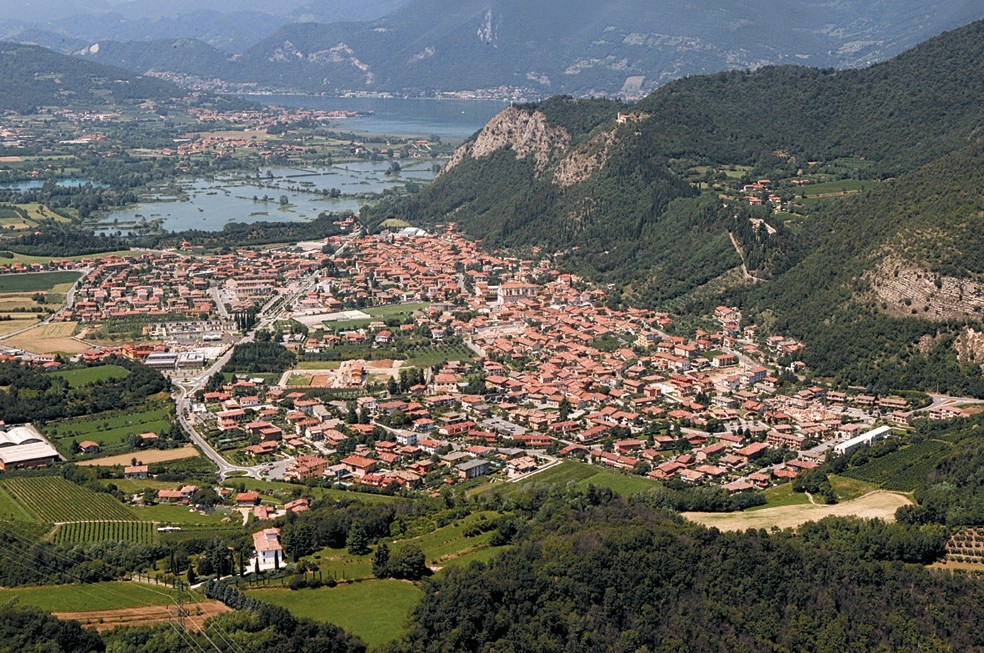
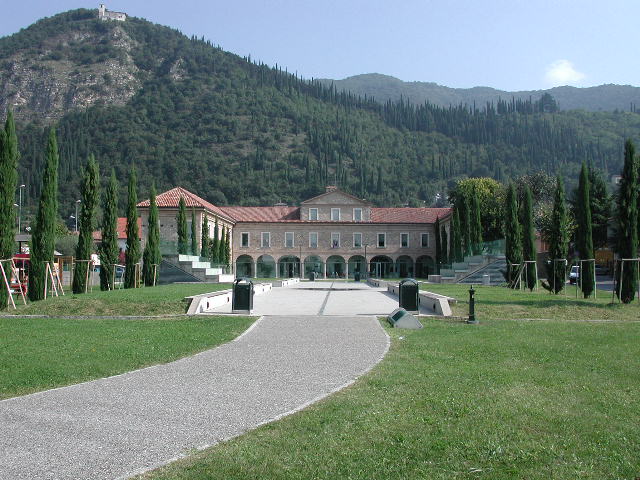
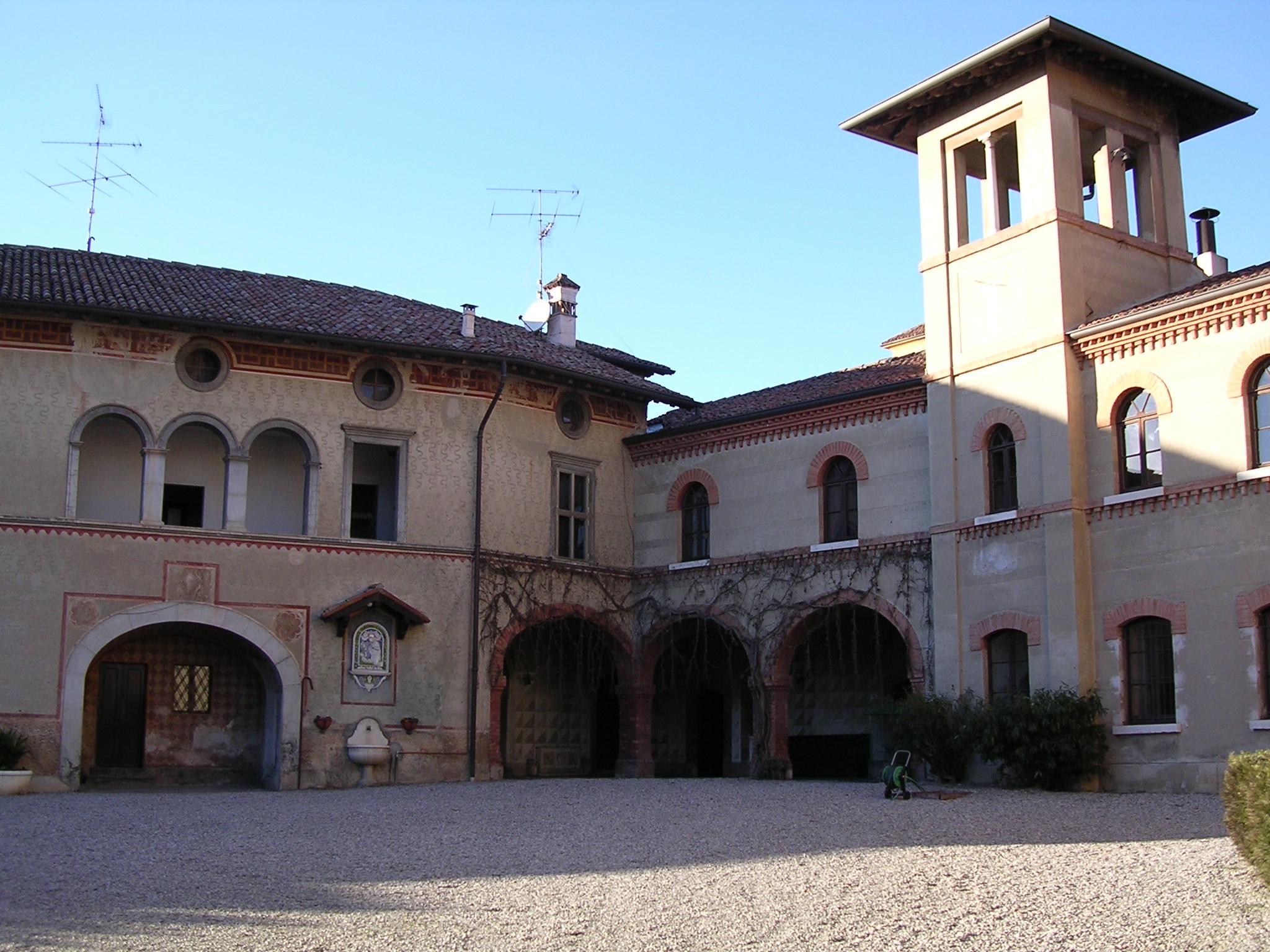
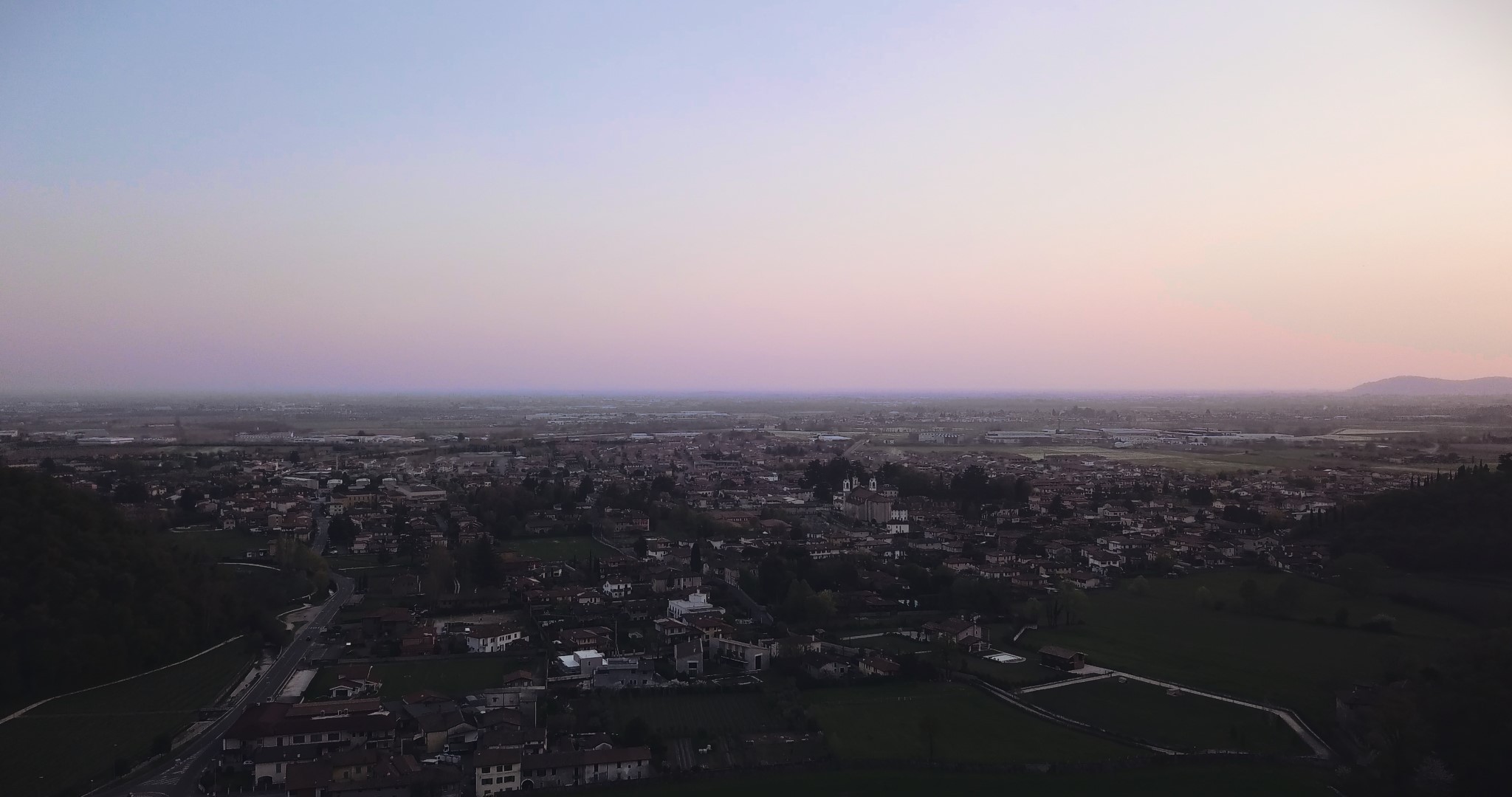
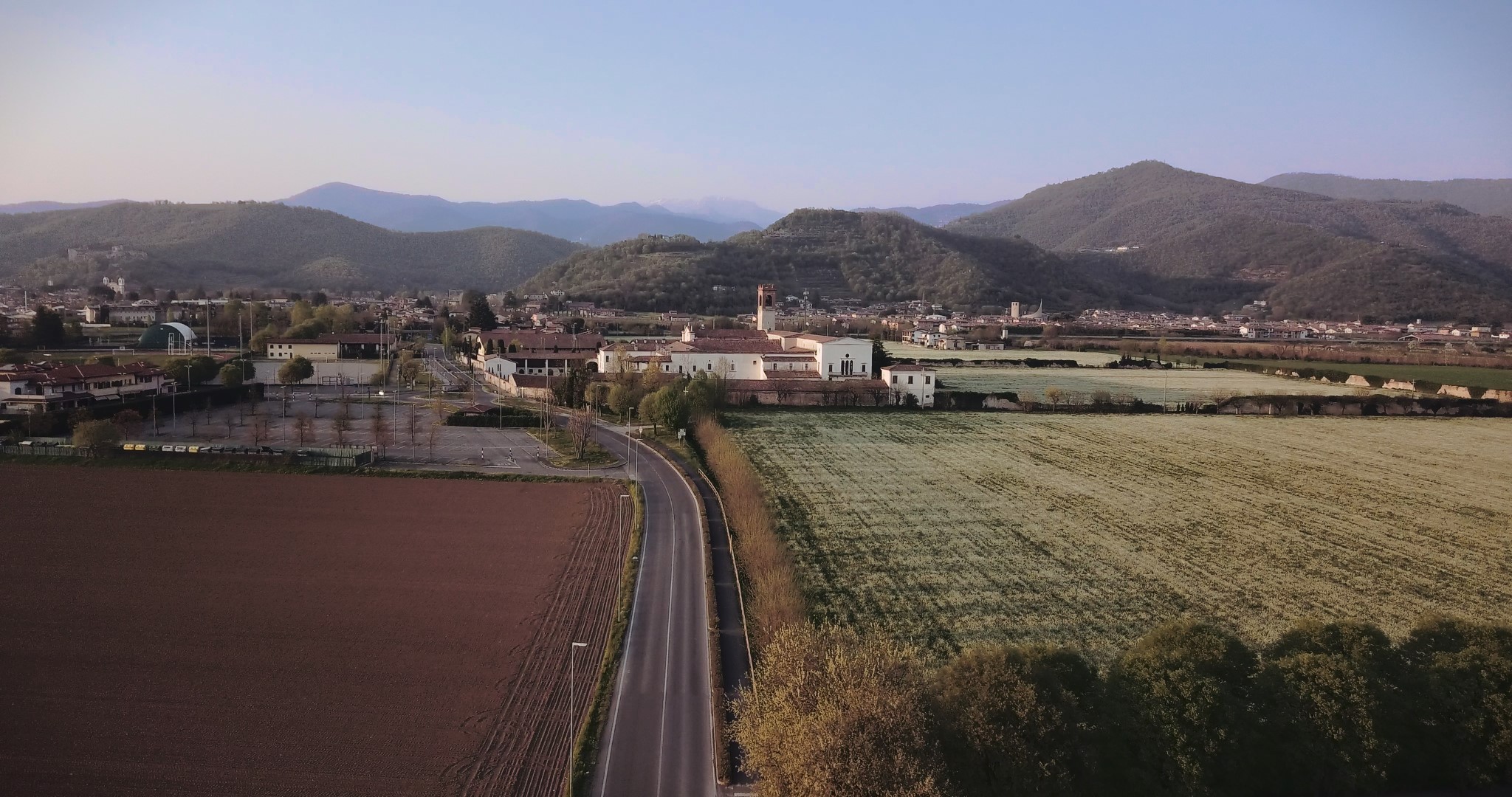
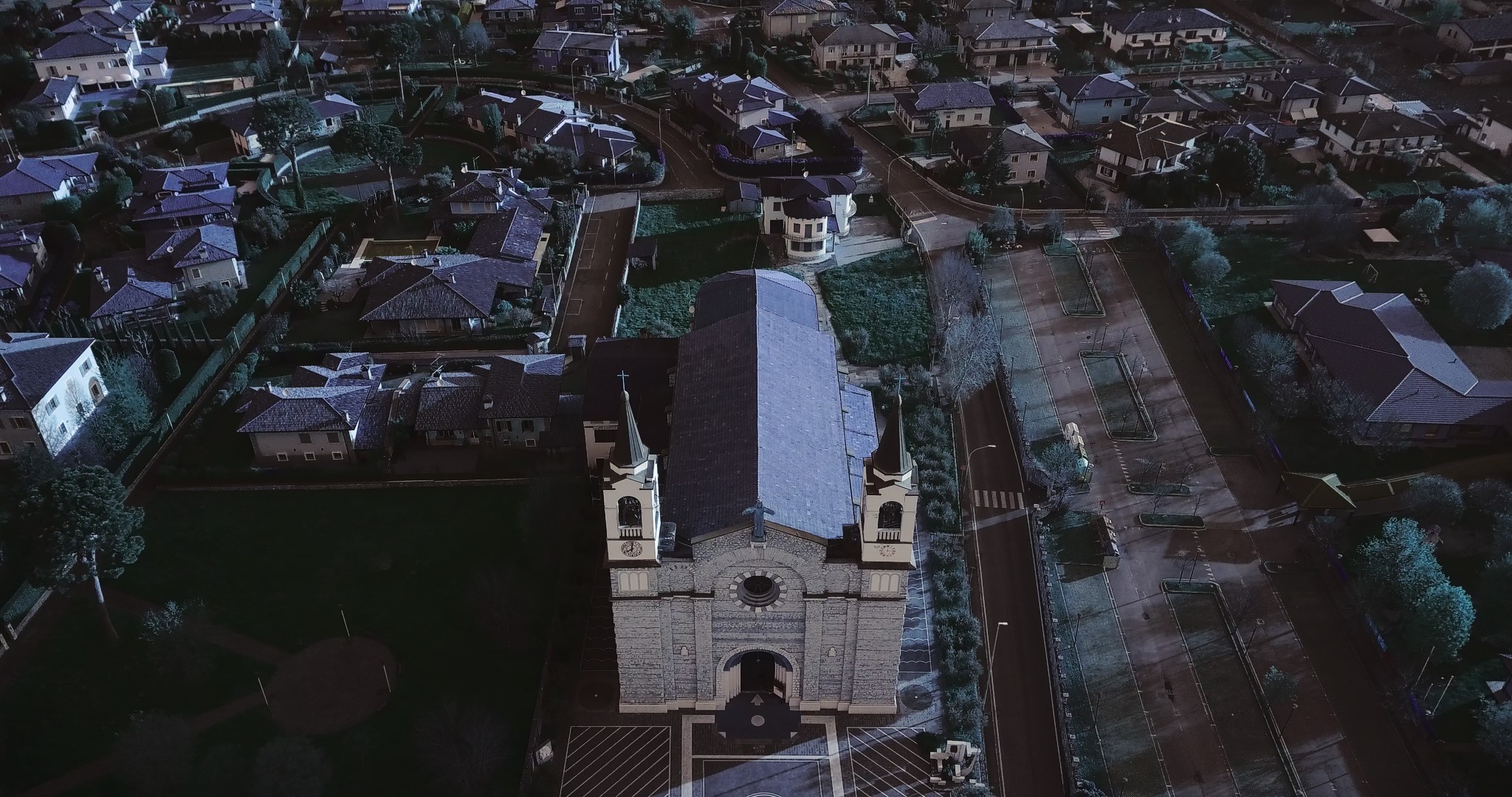
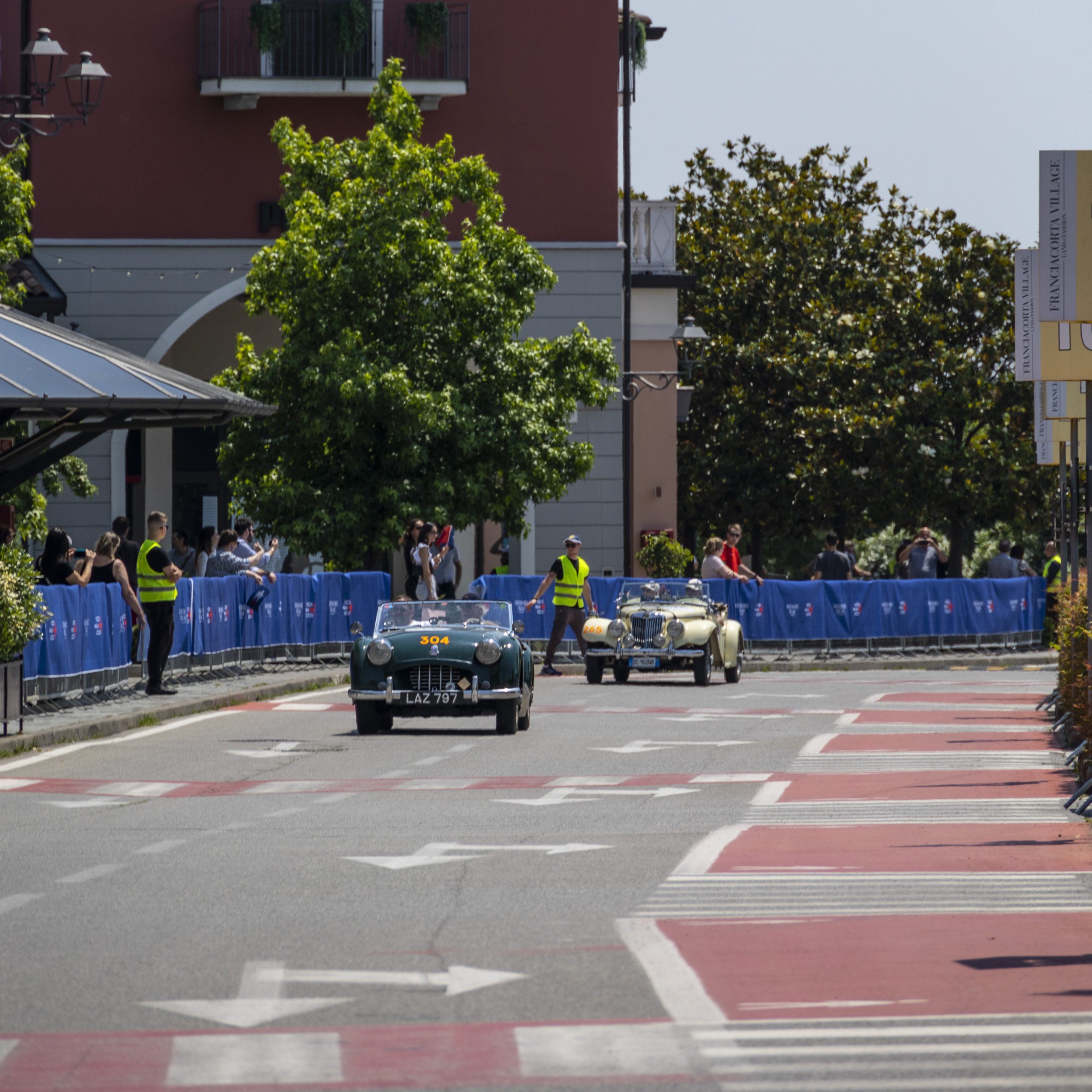
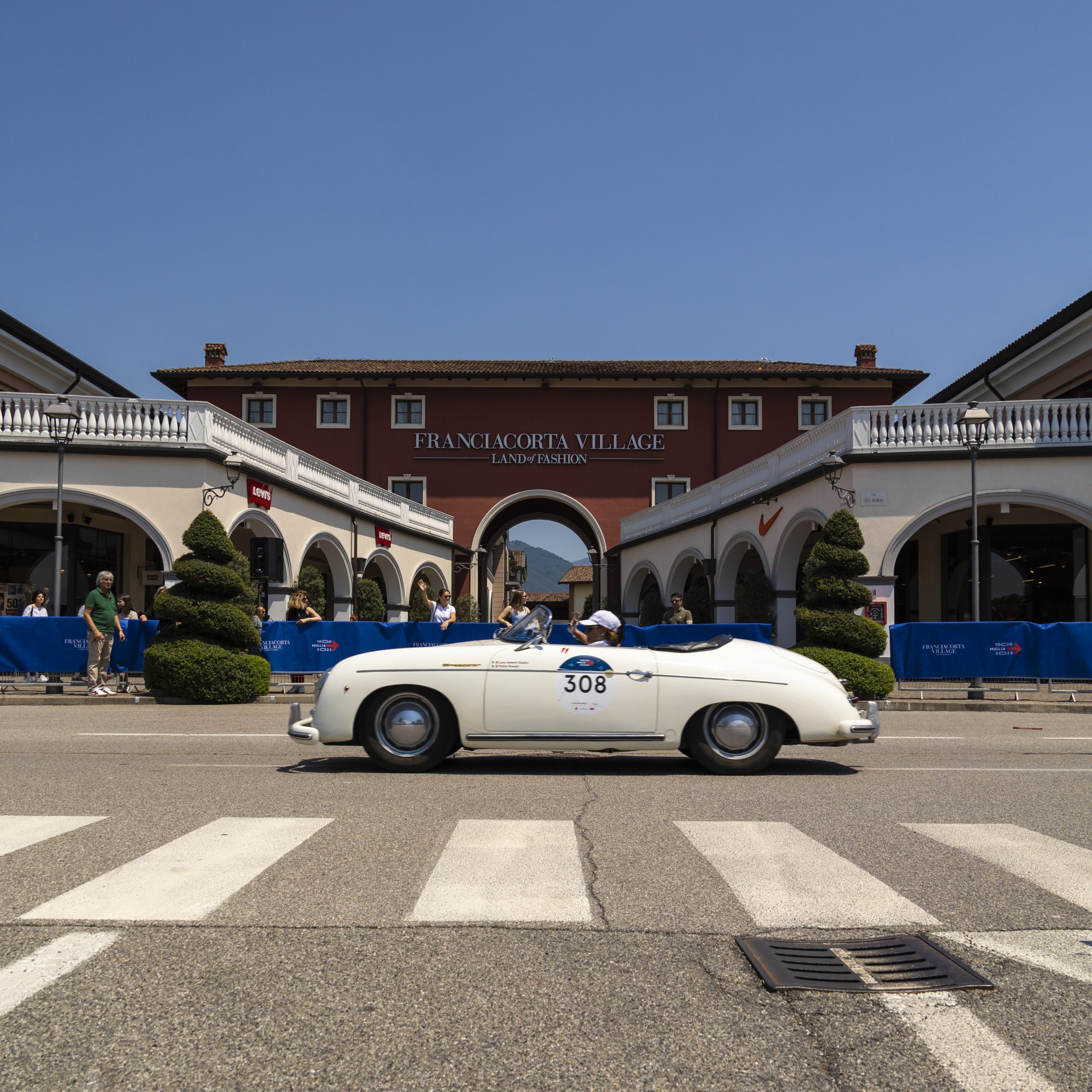














millemigliaofficial
Let’s look back at the locations of Leg 2 of the #1000Miglia2024 ✨
📍Genoa
Another new feature of the 1000 Miglia 2024: Genoa. After reaching the coast, on the Ligurian Sea, the crews arrived at the city’s Porto Antico, where lunch was held on the second day of the race. The cars then paraded through the streets of the city centre and, greeted by a large crowd, passed under the arch of Piazza Vittoria.
📍La Spezia
The last Ligurian act of the 2024 edition of the Red Arrow was the passage through La Spezia: first the Passage Control and the Time Trials among the imposing frigates of the Navy inside the Maritime Military Arsenal, then another passage stamped in the heart of the city, in Piazza Verdi.
📍Viareggio
Once in Versilia, the crews reached Viareggio, where the Art Nouveau buildings of the famous Passeggiata provided the backdrop for four Time Trials. The Time Control that marked the end of Leg 2 was at Torre del Lago Puccini, in commemoration of the 100th anniversary of the death of the Maestro.
Discover all the locations of Leg 2 at the link in bio👆
.
.
.
Ripercorriamo i luoghi della Tappa 2 della #1000Miglia2024 ✨
📍Genova
Altra novità della 1000 Miglia 2024: Genova. Gli equipaggi raggiunta la costa, affiancando il mar Ligure hanno raggiunto il Porto Antico della città, dove si è svolto il pranzo della seconda giornata di gara. Le vetture hanno poi sfilato per le vie del centro città passando, accolte da un folto pubblico, sotto l’arco di Piazza Vittoria.
📍La Spezia
L’ultimo atto ligure dell’edizione 2024 della Freccia Rossa è stato il passaggio a La Spezia: dapprima il Controllo Timbro e le Prove Cronometrate fra le imponenti fregate della Marina Militare all’interno dell’Arsenale Militare Marittimo, poi con un altro timbro nel cuore della città, in Piazza Verdi.
📍Viareggio
Arrivati in Versilia, gli equipaggi hanno raggiunto Viareggio, dove gli edifici Liberty della famosa Passeggiata hanno fatto da cornice a 4 Prove Cronometrate. Il Controllo Orario che ha sancito la fine della Tappa 2 è stato a Torre del Lago Puccini, in ricordo dei cento anni dalla scomparsa del Maestro.
Scopri tutti i luoghi della Tappa 2 al link in bio👆
Jul 25
millemigliaofficial
@jpmorganprivatebank teams up for the first year with the legendary car race ✨
Expertise, technique and passion are the core values that the prestigious brand, always side by side with its clients and their passions, shares with the 1000 Miglia.
For the occasion, the multinational company gave its guests the chance to experience the thrill of a driving simulator that allowed them to race classic cars in a truly thrilling experience 🚗
.
.
.
@jpmorganprivatebank si unisce per il primo anno alla leggendaria corsa automobilistica ✨
Conoscenza, tecnica e passione sono i valori fondamentali che il prestigioso marchio, sempre al fianco dei suoi clienti e delle loro passioni, condivide con la 1000 Miglia.
Per l’occasione la multinazionale ha dato la possibilità ai propri ospiti di provare l’ebrezza di un simulatore di guida che consente di gareggiare con auto d’epoca in un’esperienza davvero emozionante🚗
#1000Miglia2024
Jul 24
millemigliaofficial
A rainy 1000 Miglia, a lucky 1000 Miglia 🌧
Not even the rain could stop the crews, who continued their sporting activities with perseverance and determination 💪🏻
.
.
.
1000 Miglia bagnata, 1000 Miglia fortunata 🌧
Nemmeno la pioggia ha fermato gli equipaggi che hanno continuato ad affrontare le attività sportive con costanza e determinazione💪🏻
#1000Miglia2024
Jul 22
millemigliaofficial
Let’s look back on the locations of Leg 1 of the #1000Miglia2024 ✨
📍Brescia
The race started on 11 June from the city of its origins: Brescia, a place that is the past, present and future, the soul and heart of the Race, the start and arrival since the first edition.
📍Palazzolo sull’Oglio
Continuing on, the crews were welcomed with great enthusiasm by the town known for the beauty of its Tower, a true symbol of Palazzolo, which at a height of 92 metres is the tallest round-based civic bell tower in Europe.
📍Turin
And finally, the first novelty of the #1000Miglia2024: for the first time, the re-enactment of the race stopped in Turin. The passage through Via Roma to Piazza San Carlo, where the cars were presented to the public, was special, with the glimpse of the Mole Antonelliana which, for the occasion, was illuminated by the Red Arrow.
Discover all the places of Leg 1 at the link in bio👆
.
.
.
Ripercorriamo i luoghi della Tappa 1 della #1000Miglia2024 ✨
📍Brescia
L’11 giugno la gara è partita dalla città che le ha dato i natali: Brescia, luogo che è passato, presente e futuro, anima e cuore della Corsa, sede di partenza e arrivo sin dalla prima edizione.
📍Palazzolo sull’Oglio
Proseguendo, gli equipaggi sono stati accolti con grande entusiasmo dalla città conosciuta per la bellezza della sua Torre, vero e proprio simbolo di Palazzolo, che con i suoi 92 metri d’altezza è la torre civica campanaria a base circolare più alta d’Europa.
📍Torino
E, infine, la prima novità della #1000Miglia2024: per la prima volta la rievocazione della corsa ha fatto tappa a Torino. Il passaggio in via Roma fino a Piazza San Carlo, dove le vetture sono state presentate al pubblico, è stato speciale, con il colpo d’occhio della Mole Antonelliana che, per l’occasione, si è illuminata della Freccia Rossa.
Scopri tutti i luoghi della Tappa 1 al link in bio👆
Jul 18
millemigliaofficial
@chopard 🤝1000Miglia since 1988
Together, they continue a tradition of excellence with an ever-present eye for innovation in the world of motor racing and haute horlogerie.
This year, the Maison once again honoured the crews with the watch dedicated to the 2024 edition, the Mille Miglia GTS Chrono Limited Italian Edition, and reserved a prize for the winners of the Ladies’ Cup.
.
.
.
@chopard 🤝1000Miglia dal 1988
Insieme, portano avanti una tradizione di eccellenza con uno sguardo sempre rivolto all’innovazione nel mondo dell’automobilismo e dell’haute orologerie.
Anche quest’anno la maison ha omaggiato gli equipaggi con l’orologio dedicato all’edizione 2024, il Mille Miglia GTS Chrono Limited Italian Edition, e ha riservato un premio alle vincitrici della Coppa delle Dame.
#1000Miglia2024
Jul 17
millemigliaofficial
There are always more and more of us who love #1000Miglia😍🎉
A 1000 thanks to you, our followers, and to all of our wonderful audience, who make every moment of this incredible adventure so special.
Your support gives us the boost to continue creating more excitement! ❤ 🚗
.
.
.
Siamo sempre di più ad amare la #1000Miglia😍🎉Grazie 1000 a voi, i nostri follower, e a tutto il meraviglioso pubblico, che rende speciale ogni istante di questa incredibile avventura.
Il vostro sostegno ci dà la carica per continuare a emozionarvi sempre di più! ❤ 🚗
#1000Miglia2024
Jul 15
millemigliaofficial
This is the #1000Miglia 2024 🫶🏻
.
.
.
Questa è la #1000Miglia 2024 🫶🏻
Jun 25
millemigliaofficial
The excitement is even stronger when it is shared! 🚗❤️
Special thanks to all the Partners who accompanied us on this incredible adventure.
.
.
.
L’emozione è ancora più forte quando è condivisa! 🚗❤️
Un ringraziamento speciale a tutti i Partner che ci hanno accompagnato in questa incredibile avventura.
@chopard @jpmorganprivatebank @vredestein @villatrasqua @the_fast_lane_club @thehoutkampcollection @fastcarsltd @way2drive.nl @franciacorta
Jun 16
millemigliaofficial
We also celebrate the winners of the Ladies` Cup of the #1000Miglia2024 and, with them, all the female crews who took part in the race this year. 🚗🏆
The winners were Silvia Marini and Irene Dei Tos who, in a Cistalia 202 S Mm Spider from 1947, finished the race in 27 place overall🥇
.
.
.
Festeggiamo anche le vincitrici della Coppa delle Dame della #1000Miglia2024 e, con loro, tutti gli equipaggi al femminile che quest’anno hanno preso parte alla Corsa. 🚗🏆
A trionfare sono state Silvia Marini e Irene Dei Tos che, a bordo di una Cistalia 202 S Mm Spider del 1947, hanno chiuso la gara al 27 posto assoluto🥇
Jun 15
millemigliaofficial
The #1000Miglia2024 finished on the Viale Venezia platform 🔚🥲
Here are the names of the winners 🏆:
🥇 Andrea Vesco and Fabio Salvinelli in a Alfa Romeo 6C 1750 Ss Spider Z from 1929
🥈 Gianmmario Fontanella and Anna Maria Covelli in a Lancia Lambda Casaro VII Serie from 1927
🥉 Alberto Aliverti and Stefano Valente in a Alfa Romeo 6C 1750 Ss Spider Z from 1929
The winners were awarded the Coppa 1000 Miglia 2024, a work of art created by Dutch artist Sabine Marcelis, a perfect metaphor for a Team victory:
the sculpture, in fact, is composed of two parts that, when joined together, make up a whole. Two complementary pieces, designed to be autonomous and intended for the driver and co-driver, which only through their union find completeness 💫
.
.
.
Sulla pedana di Viale Venezia si è conclusa la #1000Miglia2024 🔚🥲
Ecco i nomi dei vincitori🏆:
🥇Andrea Vesco e Fabio Salvinelli a bordo di una Alfa Romeo 6C 1750 Ss Spider Z del 1929
🥈 Gianmmario Fontanella e Anna Maria Covelli a bordo di una Lancia Lambda Casaro VII Serie del 1927
🥉 Alberto Aliverti e Stefano Valente a bordo di una Alfa Romeo 6C 1750 Ss Spider Z del 1929
I vincitori si sono aggiudicati la Coppa 1000 Miglia 2024, un’opera d’arte realizzata dall’artista olandese Sabine Marcelis, metafora perfetta della vittoria in Team:
la scultura, infatti, è composta da due parti che, unite, la compongono nella sua interezza. Due pezzi complementari, pensati per essere autonomi e destinati a pilota e copilota, che solo con la loro unione trovano completezza💫
Jun 15
millemigliaofficial
After some 2200 km through some of the most beautiful places in Italy, the crews reached #Brescia
Let’s review the best moments of Leg 5 🥲🚗🏁
.
.
.
Dopo circa 2200 km attraversando alcuni tra i luoghi più belli d’Italia, gli equipaggi hanno raggiunto #Brescia
Rivediamo i momenti più belli della Tappa 5 🥲🚗🏁
Jun 15
millemigliaofficial
Once again, this year the passage on Lake Garda returns: the competing cars paraded along the Brescian shore of the Benaco passing through #Peschiera, #Sirmione and #Desenzano🌊
all the way to the coastal towns of the Valtenesi: #Padenghe, #Moniga, #Manerba and #SanFelicedelBenaco saluted the race before arriving in #Salò and continuing towards the finish in #Brescia 🚗🔜📍
.
.
.
Anche quest’anno torna il passaggio sul Lago di Garda: le auto in gara hanno sfilato lungo la sponda bresciana del Benaco attraversando #Peschiera, #Sirmione e #Desenzano🌊
fino ai comuni rivieraschi della Valtenesi: #Padenghe, #Moniga, #Manerba e #SanFelicedelBenaco hanno salutato la Corsa prima di giungere a #Salò e proseguire verso l’arrivo di #Brescia 🚗🔜📍
Jun 15